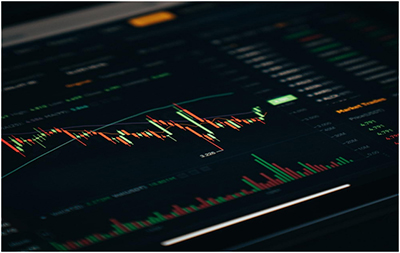A Brief Historical Timeline Of The Currency Trading & Forex Market

Modern electronic-forex market chart
Source: https://unsplash.com/photos/JpflvzEl5cg
The forex market is the most prominent and largest currency market, where trillions of Dollars are traded daily. However, it was not always this advanced and well-constructed. This marketplace has evolved into its contemporary form by undergoing various developments over time.
Let us look at the brief history of forex trading, closely intertwined with the history of commerce and monetary systems.
Currency trading in ancient times
The concept of currency transactions and trades has been with us since ancient times. People adopted the “bartering” method to purchase and trade goods during that era. As per this system, a person would exchange their item, like a sack of rice, for another product, e.g., a chicken, owned by a second party.
Later around 260 BC, the usage of gold coins was normalized for trading purposes. Ancient Egyptians and Greeks utilized these commodities to conduct trades and settle payments. Copper coins were also developed during the middle ages;
however, eventually, the coinage system collapsed due to inherent issues like weight-based value and limited reserves.
At the end of the middle ages, around the 15th century, many international banks were established to facilitate currency transactions. Two centuries later, an active forex market was established in Amsterdam in the Netherlands – known as the first forex trading venue where participants from England and Holland interacted.

Illustration of old gold coins
Source: https://unsplash.com/photos/Mx3tCAyN0vI
The inception of modern trading: From Gold Standard to free-floating system
The present-time system, in which you can easily engage with forex trading via home PCs and mobiles, is a culmination of extensive evolutions.
The inauguration of the Gold Standard in 1870 is marked as one of the most significant events in currency trading history. According to the Gold Standard, governments pegged their currencies with an ounce of gold to maintain a stable channel of currency conversion. Authorities were required to hold enough gold in their reserves to support currency transactions and circulation.
However, the Gold Standard fell apart during World War I when countries started printing more money than their actual gold reserves, in order to finance increased expenses.
The ensuing lack of confidence and economic depression resulted in the creation of the new ‘Bretton Woods monetary system.’ During World War II, representatives from 44 allied nations gathered in Bretton Woods, US, and decided to peg their currencies with the American Dollar. As per this framework, USD became the global standard for foreign exchange, with its value linked to gold prices.
Due to substantial reserve deficits and surging debt, US President Richard Nixon unilaterally abandoned the Bretton Woods agreement in 1971. This “Nixon-shock” eventually brought about the “free-floating currency market”, which is the present age monetary system. According to this arrangement, currencies are not backed by any physical product of value; instead, they fluctuate based on the supply and demand of other currencies (floating exchange rate).
The shape of the forex trading market now
The technological advancements of the previous decades have opened the doors of forex trading to retail traders and individual participants, a privilege not available in the previous ages. Internet-based trading has become accessible to everyone, with the lowest-possible entry barriers and various facilities.
It is indeed wondrous how the antique international financial sphere has transformed into an interconnected and futuristic domain over the years.





